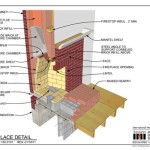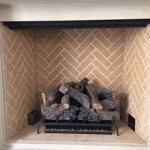Freestanding Glass Fireplace Screens: A Comprehensive Guide
Freestanding glass fireplace screens represent a practical and aesthetically pleasing solution for homeowners seeking to enhance the safety, efficiency, and visual appeal of their fireplaces. They serve as a barrier between the fire and the surrounding room, preventing sparks and embers from escaping, while simultaneously allowing for an unobstructed view of the flames. This article will delve into the various aspects of freestanding glass fireplace screens, covering their benefits, types, selection criteria, installation, maintenance, and considerations for optimal performance.
Fireplaces, whether wood-burning, gas, or electric, can introduce certain risks into a home. Sparks can ignite nearby flammable materials, such as rugs, furniture, or curtains. Moreover, the open nature of traditional fireplaces allows for significant heat loss up the chimney, reducing the overall efficiency of the heating system. A well-chosen freestanding glass fireplace screen can mitigate these risks and improve the fireplace's performance.
Beyond safety and efficiency, these screens provide an opportunity to enhance the decorative aesthetic of a living space. They come in a wide array of styles, finishes, and designs, allowing homeowners to select a screen that complements their interior décor. From minimalist modern designs to ornate traditional styles, there is a freestanding glass fireplace screen to suit almost any taste.
Understanding the Benefits of Freestanding Glass Fireplace Screens
The advantages of using freestanding glass fireplace screens extend beyond mere aesthetics. Several key benefits contribute to their popularity among homeowners.
Firstly,
safety
is a paramount concern. The primary function of a fireplace screen is to prevent sparks, embers, and rolling logs from escaping the firebox. This reduces the risk of fire hazards and protects children and pets from accidental burns. The glass pane acts as a solid barrier, containing the fire and minimizing the potential for accidents.Secondly,
improved energy efficiency
is a significant advantage. While open fireplaces can lose a substantial amount of heat up the chimney, a glass screen can help to reduce this heat loss. By partially enclosing the firebox, the screen creates a radiant heat source, directing more heat into the room rather than allowing it to escape. This can lead to lower heating bills and a more comfortable living environment.Thirdly,
enhanced aesthetics
play a crucial role in the selection process. Freestanding glass fireplace screens are available in a vast selection of styles, designs, and finishes. This allows homeowners to choose a screen that complements their existing décor and enhances the visual appeal of their fireplace. Some screens feature intricate metalwork, while others boast a sleek, modern design. The transparency of the glass ensures an unobstructed view of the flames, creating a warm and inviting atmosphere.Fourthly,
ease of maintenance
is another beneficial attribute. Unlike some traditional fireplace accessories, freestanding glass screens are relatively easy to clean and maintain. A simple wipe down with a glass cleaner is usually sufficient to remove soot and other debris. The sturdy construction of most screens ensures durability and longevity, requiring minimal upkeep over time.Types of Freestanding Glass Fireplace Screens
Freestanding glass fireplace screens can be differentiated by their construction, style, and the type of glass used. Understanding these variations is critical for selecting the most appropriate screen for a specific fireplace and home.
One common type is the
single-panel screen
. This screen consists of a single pane of glass surrounded by a metal frame. Single-panel screens offer a clean and minimalist look, making them suitable for modern and contemporary homes. They are generally lightweight and easy to move, allowing for convenient access to the firebox.Another popular option is the
three-panel screen
. This screen features a central glass panel flanked by two hinged side panels, also typically with glass. The side panels can be adjusted to fit different fireplace shapes and sizes, providing a greater degree of flexibility. Three-panel screens offer increased stability and can be particularly useful for wider fireplaces.Bi-fold screens
are another variation, featuring two hinged glass panels that fold inward for easy access to the fire. These screens are often more ornate and may feature decorative metalwork. Bi-fold screens can offer a more traditional look and feel, suiting homes with a classic or antique décor.The type of
glass
used in the screen is also an important consideration. Tempered glass is the most common choice due to its superior strength and resistance to heat. Tempered glass is significantly stronger than standard glass and will shatter into small, relatively harmless pieces if broken, reducing the risk of injury. Some screens may use ceramic glass, which offers even greater heat resistance and is often found in high-performance fireplaces.Finally, the
frame material
contributes significantly to the overall aesthetic and durability of the screen. Common frame materials include wrought iron, steel, and brass. Wrought iron offers a classic and timeless look, while steel provides a more modern and industrial feel. Brass can add a touch of elegance and sophistication. The choice of frame material should be based on personal preference and the overall décor of the room.Selecting the Right Freestanding Glass Fireplace Screen
Choosing the appropriate freestanding glass fireplace screen requires careful consideration of several factors, including fireplace size, style preferences, safety features, and budget. A well-informed decision will ensure optimal performance and satisfaction.
Fireplace Size:
Before purchasing a screen, accurately measure the dimensions of the fireplace opening. The screen should be wider and taller than the opening to provide adequate coverage and prevent sparks from escaping. Consider the depth of the firebox as well, as the screen should sit comfortably in front of the fireplace without obstructing the airflow.Style and Design:
Select a screen that complements the existing décor of the room. Consider the architectural style of the home and the overall aesthetic you are trying to achieve. A minimalist screen may be ideal for a modern home, while an ornate screen may be more suitable for a traditional setting. Pay attention to the finish of the frame and ensure that it coordinates with other metal accents in the room.Safety Features:
Ensure that the screen is made of tempered glass or ceramic glass for superior heat resistance and safety. Check for sturdy construction and a stable base to prevent the screen from tipping over. Look for screens with a fine mesh backing to further prevent sparks from escaping. Consider the presence of children or pets in the home and choose a screen with features that minimize the risk of accidents.Material and Durability:
Opt for a screen made of high-quality materials that are designed to withstand the heat and wear of regular use. A wrought iron or steel frame is generally more durable than a lighter weight material. Ensure that the glass is securely mounted and that the hinges (if applicable) are sturdy and well-made.Budget:
Freestanding glass fireplace screens are available at a wide range of price points. Determine a budget before starting your search and focus on screens that offer the best value for your money. Consider the long-term cost of ownership, including maintenance and replacement costs. A higher-quality screen may be more expensive initially but can save money in the long run by offering greater durability and performance.Airflow Consideration:
It's crucial to ensure adequate airflow to the fireplace even with a screen in place. Some screens have built-in vents or are designed with sufficient space between the glass and the frame to allow for proper ventilation. Insufficient airflow can lead to incomplete combustion, increased smoke, and reduced heating efficiency. Follow the fireplace manufacturer's recommendations regarding airflow requirements.Local Regulations:
Consult local building codes and regulations regarding fireplace screens. Some jurisdictions may have specific requirements for screen height, mesh size, or material type. Ensure that the screen you choose complies with all applicable regulations to avoid potential fines or penalties.Installation and Maintenance
The installation of a freestanding glass fireplace screen is generally straightforward, but proper placement and adherence to safety guidelines are essential. Regular maintenance will ensure the screen remains in good condition and performs optimally for years to come.
Installation:
Most freestanding screens require minimal assembly. Carefully unpack the screen and follow the manufacturer's instructions. Position the screen in front of the fireplace opening, ensuring that it is centered and stable. Adjust the side panels (if applicable) to fit the shape of the fireplace. Ensure that the screen is far enough away from the firebox to prevent direct contact with the flames or excessive heat.Cleaning:
Regularly clean the glass panels with a glass cleaner to remove soot, dust, and fingerprints. Use a soft cloth or sponge to avoid scratching the glass. Wipe down the frame with a damp cloth to remove any debris. Avoid using abrasive cleaners or scouring pads, as these can damage the glass or frame. For stubborn stains, consider using a specialized fireplace glass cleaner.Inspection:
Periodically inspect the screen for any signs of damage or wear. Check the glass for cracks or chips and the frame for rust or corrosion. Tighten any loose screws or bolts. Replace any damaged components promptly to prevent further deterioration. If the screen has hinges, lubricate them regularly to ensure smooth operation.Storage:
During periods of non-use, such as the summer months, consider storing the screen in a dry place to protect it from rust and corrosion. Cover the screen with a cloth or plastic sheet to prevent dust accumulation. Store the screen in a safe location where it will not be damaged or pose a safety hazard.Professional Inspection:
Consider having a professional fireplace service technician inspect the screen annually as part of a comprehensive fireplace maintenance program. A professional can identify potential problems and recommend necessary repairs or replacements. This proactive approach can help to ensure the safety and efficiency of the fireplace system.By carefully considering these factors and following the recommended installation and maintenance procedures, homeowners can select and utilize freestanding glass fireplace screens effectively, enhancing the safety, efficiency, and beauty of their fireplaces.

Barton 47 In W X 30 H 3 Panel Freestanding Fireplace Screen Tempered Glass With Handle 95060 The Home Depot

Barton 36 In W X 26 H Single Fire Place Panel Tempered Glass Fireplace Screen Freestanding 95057 The Home Depot

Freestanding Fireplace Glass Screen 44 Wide X 32 High

Plasma Fire Screen Flat Plane Of Glass Ecosmart

Mentas Curved Glass Fire Screen Conmoto Fireside Accessories

Vanguard Single Panel Glass Modern Fireplace Screen

7 Most Popular Glass Fireplace Screens For 2024 The Jerum Post

Fireplace Glass Doors Vs Screens Full Service Chimney

Freestanding 39 X 29 Fireplace Screen Tempered Glass Panel Fire Guard Clear

Ams Fireplace Frameless Glass Screen With Golden Brass Feet Medium 39 X 29 Clear Made In Usa Com
Related Posts








